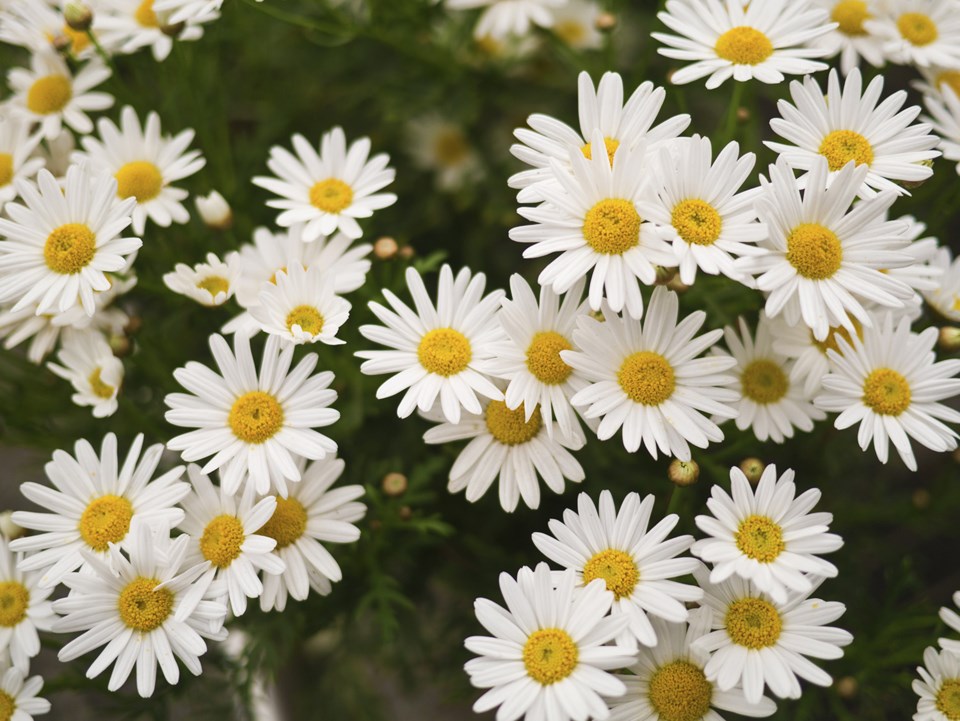It's not hard to get nine months of flowers out of the daisy family even if all you have is a couple of containers to plant them in. Many are so happy in well-drained soil that containers are an ideal spot.
Daisy flowers are profuse, long lasting and good for cutting. Even their faults are generous ones. They tend to seed around, and clumps increase fast. Most like sun but can handle partial shade. Though relaxed about watering most of the year, they do need watering in long, hot summers.
The show begins in March with the yellow, daisy flowers of Leopardsbane (Doronicum). Varieties range from three feet (one metre) tall to 12 inches (30 centimetres) – nice for bees early in the year.
Just a tad later, the very dwarf double daisies open white, pink or rosy red pompoms - spectacular the first year, but after that flowers are smaller. These were bred from Bellis perennis, the lawn daisy which some gardeners loathe and others love.
By mid spring, the fleabanes (Erigeron) start flowering and continue for ages. These are a huge family of daisies often with so many narrow petals they can look semi-double. Colours vary from white, pink to various purples. They love good drainage and some happily self-sow in driveways and paver cracks.
By summer, Shasta daisies open their usually white petals with gold centres. Today, Shasta flowers can be double, shaggy, or have quilled or twisted petals. Many dwarfs are now available and one, 'Becky,' opens yellow petals which slowly turn to white. If you deadhead them in July, you'll get more flowers later.
Echinacea is a daisy that's become hugely popular. It's a native North American daisy that had herbal uses as an immune system stimulator and is still used for this purpose today. It is best in poor soil because this helps it stay compact - and it hates to be moved.
The many native species usually flowered in purple-pink. Newer cultivars have many whites. The variety 'Cheyenne Spirit' has red, orange and yellow flowers. Some newer echinaceas flower from seed the first year.
At summer's peak, coneflowers (Rudbeckias) begin blooming. The newer ones today are developed from the native Black Eyed Susan that covers the B.C. Interior hills with gold in summer. All grow and expand so fast that the main problem is usually stopping them.
These days rudbeckia flower colours go beyond the blazing 'Goldsturm' which is still so popular today. 'Cappuchino' is bronze-brown, 'Prairie Sun' is gold with pale tips and a green centre and 'Cherry Brandy' is red with a dark cone.
Soon the perennial fall asters flower. Today they are mainly dwarf, and colours are intense purples, rose, pink and soft white. 'Purple Dome' is only 18 inches (60cm) while 'Alert' is only 12 inches (30cm). With these, as with other daisies, pests aren't a problem. Among the tallest popular daisies are Heleniums (Sneeze-weed). These are rugged 3' (1m) tall perennials that like rich soil and moisture, but survive nicely on less.
Flowers are in long-lasting clusters of rich golds, orange reds and browns. Some are in blends of two or three colours. I have seen helenium used as a very effective divider in a small garden.
Anne Marrison is happy to answer garden questions. Send them to her via [email protected] It helps me if you can give the name of your city or region.



